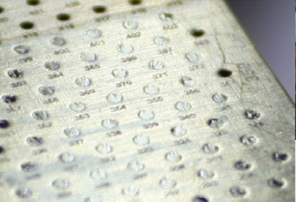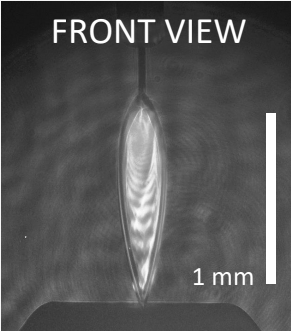Targetry
Anything (even nothing) in the focus of the high power laser pulse can be considered as a target. It is developed and finessed within 'targetry'-activities. Those are the foundation of reliable conversion of laser-plasmas in applicable particle and photon radiation modalities, in particular for operating laser-driven ion acceleration.
-
Freestanding foils provide the basis for laser-driven ion acceleration. LMU's target factory is capable of producing thin targets in a large variety of materials and thickness. Most commonly used are for example Diamond Like Carbon (DLC) foils with 5 to 200 nm thickness, plastic foils with 5 nm to 5 µm thickness, and Gold-foils as thin as 5 nm. Carbon-Nano-Tube (CNT) foams can be supplied either stand alone or attached to solid foils to form layered targets
more
-
Our current workhorse is a free-flowing liquid leaf target formed by the collision of two cylindrical water jets. By tuning the target parameters, such as the diameter of the water jets or the flow rate, the overall size and thickness of the liquid leaf target can be altered. The thin-film interference pattern in the front view image provides a relative thickness map of the target, with thicknesses down to the sub-micron level at the bottom of the leaf. Compared to a foil target positioning system, the liquid target offers the possibility of high-repetition-rate experiments, as the target regenerates itself within a few tens of milliseconds after the laser shot. The ions are accelerated in the so-called TNSA (Target Normal Sheath Acceleration) process, in which a hot electron layer is formed on the rear side of the target. The rear surface ions are then accelerated in the strong space charge field generated by this electron cloud.
more



